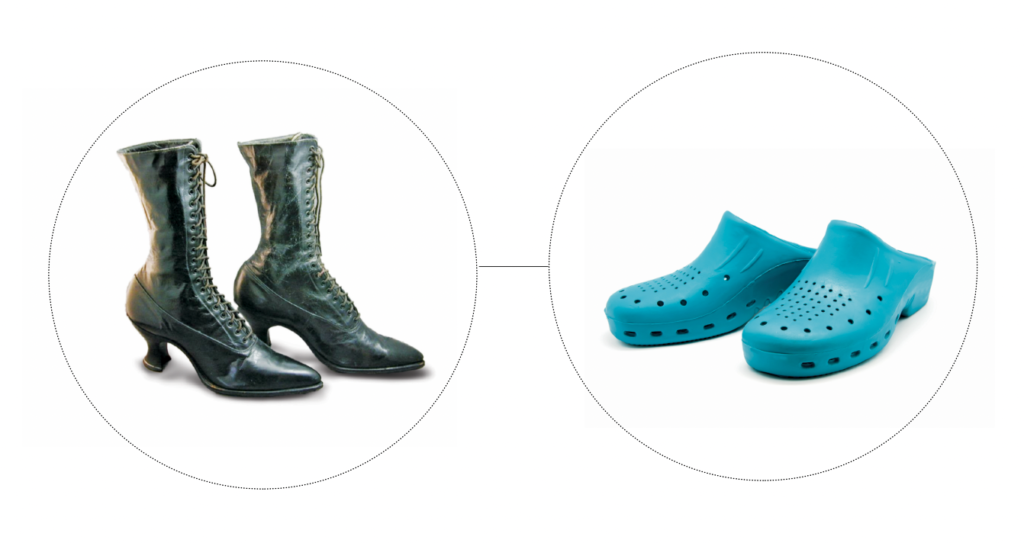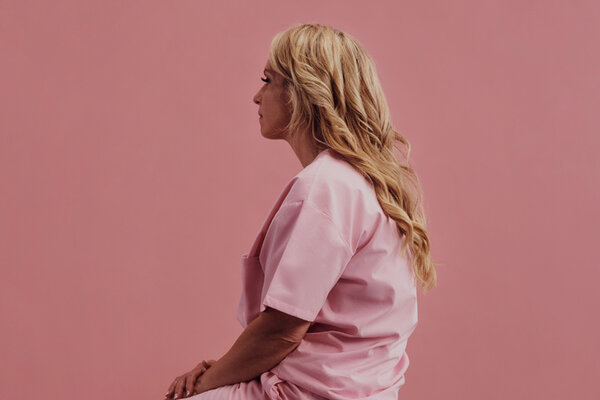Feature
From Clodhoppers to Clogs
The colorful history of nursing shoes

A typical 12-hour shift keeps nurses on their feet. On average, nurses take more than 9,000 steps a day while contending with hazards like slippery hospital floors, unidentified fluid spills and who knows what kind of germs.
It’s no wonder that nursing shoes, like so many other aspects of nursing practice, have undergone a dramatic evolution over the past two centuries.
From Barefoot to Power Shoe
Believe it or not, the first nurses — nuns of the 1300s — often wore no shoes, covering their bare feet with the long robes of their common dress. Some nuns wore sandals, which still left their feet vulnerable to parasitic diseases and foot ulcers.
The first true nursing shoes were probably worn in 1854 by Florence Nightingale during the Crimean War. Florence believed that nurses and the nursing profession needed to embody a certain look befitting the probity of the nursing role. Thus, nurses adopted black leather lace-up shoes with a flat leather sole and slightly arched spool heel.
During the Victorian era, these nursing shoes connoted power and status through the height of the shoe and the elevated heel. The black leather lace-up shoe may not have followed Nightingale’s strict guidelines for cleanliness, but the long tweed dresses nurses commonly wore probably helped to protect their shoes.
Birth of the Brand: “A Prescription for Comfort”
New manufacturing processes in the 18th and 19th century opened the door to mass production of goods.
Consumers now had more products to choose from, which led the United States to pass the Trademark Act in 1870, allowing companies to claim exclusive rights to use specific words, phrases, designs or even colors to identify their products and brands.
This coincided with the emergence of professional nurse training programs in the U.S., so some companies began using nurses in their marketing and advertising campaigns for shoes and foot-related products.
As early as 1888, an ad for Fastep Foot Powder showed nurses powdering their feet before donning their lace-up nursing shoes, with the headline proclaiming, “They know how to start the day right.”
In 1896, Krohn, Fechheimer & Co., later known as the United States Shoe Corp., launched the Red Cross shoe brand. This popular brand had no connection to the Red Cross organization, but it did make nursing shoes, and sometimes referred to nurses in its marketing campaigns.
By 1941, ads for the company’s “beautiful, perfect-fitting Red Cross shoes” boasted that they were “Preferred by America’s smart Nurses 3½ to 1” in a survey conducted by Registered Nurse magazine.






















